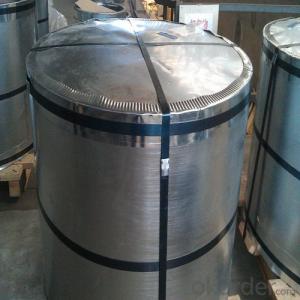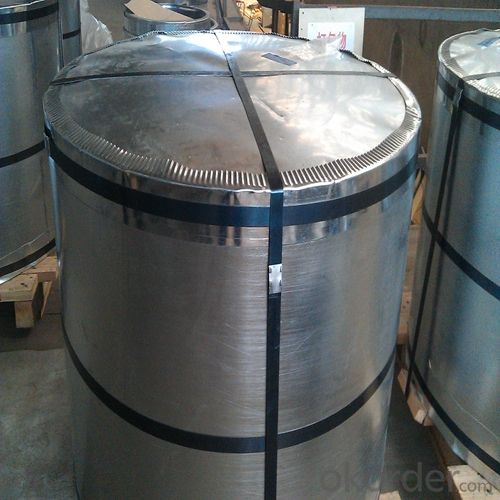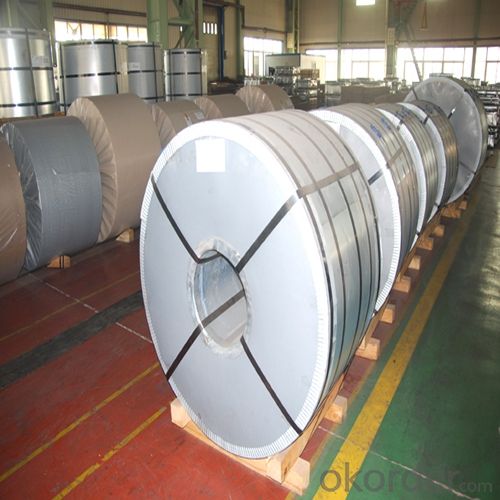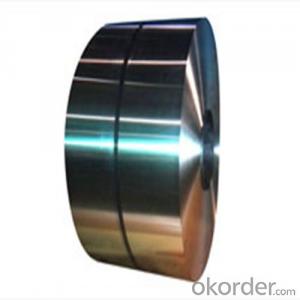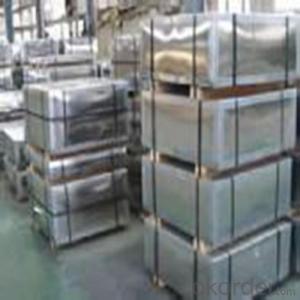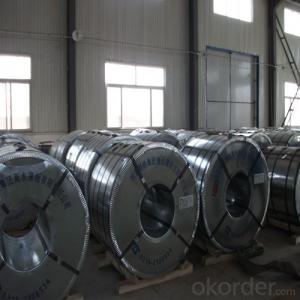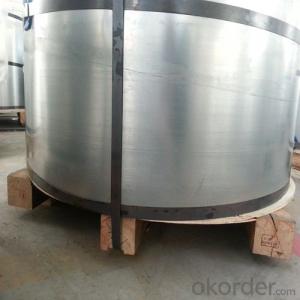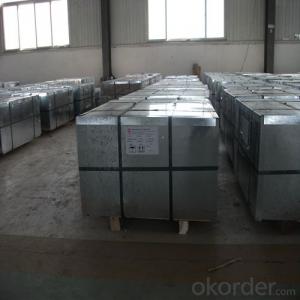Electrolytic Tinplate of Prime Quality for Twist-off Caps Use 0.26mm Thickness
- Loading Port:
- Shanghai
- Payment Terms:
- TT OR LC
- Min Order Qty:
- 25 m.t.
- Supply Capability:
- 15000 m.t./month
OKorder Service Pledge
OKorder Financial Service
You Might Also Like
Specification
1.Structure of Electrolytic Tinplate of Prime Quality for Twist-off Caps Use 0.26mm Thickness Description
Corrosion resistance – Tinplate has got good corrosion resistance. By selecting a proper coating weight, appropriate corrosion resistance is obtained against container contents. Coated items should meet 24 hour 5 % salt spray requirement.
Solderability and weldability – Tinplates can be joined both by soldering or welding. These properties of tinplate are used for making various types of cans.
Hygienic – Tin coating provides good and non toxic barrier properties to protect food products from impurities, bacteria, moisture, light and odours.
Safe – Tinplate being low weight and high strength makes food cans easy to ship and transport.
Eco friendly – Tinplate offers 100 % recyclability.
Tin is not good for low temperature applications since it changes structure and loses adhesion when exposed to temperatures below – 40 deg C.
2.Main Features of the Electrolytic Tinplate of Prime Quality for Twist-off Caps Use 0.26mm Thickness
Appearance – Tinplate is characterized by its beautiful metallic luster. Products with various kinds of surface roughness are produced by selecting the surface finish of the substrate steel sheet.
Paintability and printability – Tinplates have excellent paintability and printability. Printing is beautifully finished using various lacquers and inks.
Formability and strength – Tinplates have got very good formability and strength. By selecting a proper temper grade, appropriate formability is obtained for different applications as well as the required strength after forming.
3.Electrolytic Tinplate of Prime Quality for Twist-off Caps Use 0.26mm Thickness Images
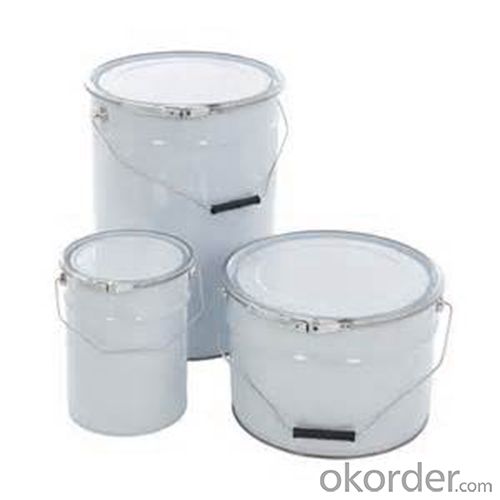
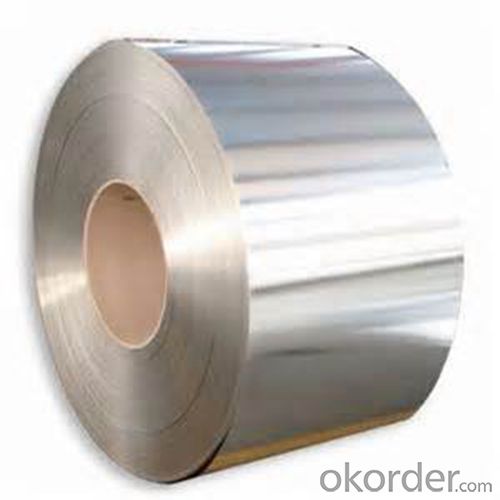
4.Electrolytic Tinplate of Prime Quality for Twist-off Caps Use 0.26mm Thickness Specification
Specification of :
Standard: ISO 11949 -1995, GB/T2520-2000,JIS G3303,ASTM A623, BS EN 10202
Material: MR,SPCC
Thickness:0.15mm - 0.50mm
Width: 600mm -1150mm
Temper: T1-T5
Annealing: BA & CA
Coil Inner Diameter: 508mm
Weight: 6-10 tons/coil 1~1.7 tons/sheets bundle
Passivation:311
Oil: DOS
Surface: Finish,bright,stone,matte,silver
5.FAQ of Electrolytic Tinplate of Prime Quality for Twist-off Caps Use 0.26mm Thickness
- What is tinning and how does it work?
Tinning is the process of thinly coating sheets of wrought iron or steel with tin, and the resulting product is known as tinplate. It is most often used to prevent rust.
- Do you only have prime quality tinplate?
We can supply both prime and second quality tinplate.
- Q: How thick is tinplate?
- Tinplate typically has a thickness ranging from 0.13mm to 0.49mm.
- Q: How is tinplate coated for paint cans?
- Tinplate is typically coated for paint cans by applying a thin layer of protective material, such as lacquer or polymer, onto the surface of the tinplate. This coating acts as a barrier to prevent the metal from coming into direct contact with the paint, ensuring the can remains corrosion-resistant and the paint remains uncontaminated.
- Q: What are the different tinplate grades available in the market?
- There are several different tinplate grades available in the market, including T1, T2, T3, T4, T5, and T6. These grades vary in terms of their thickness, coating weight, and mechanical properties, making them suitable for different applications.
- Q: What is the average lifespan of tinplate products?
- The average lifespan of tinplate products can vary depending on various factors such as usage, maintenance, and environmental conditions. However, with proper care and handling, tinplate products can last for several years or even decades.
- Q: Can tinplate packaging be used for sports equipment?
- Yes, tinplate packaging can be used for sports equipment. Tinplate packaging provides durability, protection, and resistance to corrosion, making it suitable to store and transport various types of sports equipment such as balls, racquets, and small accessories. Additionally, tinplate packaging can be customized and branded, enhancing the overall aesthetic appeal of the products.
- Q: What are the disadvantages of using tinplate?
- Some disadvantages of using tinplate include its susceptibility to rust and corrosion, limited design options due to its rigid nature, higher cost compared to alternative materials, and potential health risks if the tin coating is damaged and ingested.
- Q: Can tinplate be printed on?
- Yes, tinplate can be printed on.
- Q: What are the safety regulations for tinplate packaging?
- The safety regulations for tinplate packaging vary depending on the specific industry and region. However, some common safety regulations include ensuring that the tinplate packaging is free from sharp edges or protrusions that could cause injury, conducting regular quality control checks to ensure the integrity of the packaging, and adhering to specific guidelines for handling and storing tinplate packaging to prevent accidents or contamination.
- Q: Can tinplate be used for cooking utensils?
- No, tinplate is not suitable for cooking utensils as it is not food safe and can react with certain ingredients, compromising the safety and quality of the food.
- Q: How is tinplate cleaned and maintained?
- Tinplate is commonly cleaned and maintained by using mild soapy water and a soft cloth to wipe away any dirt or stains. It is important to avoid using abrasive cleaners or scrub brushes that could damage the tin coating. Additionally, regular maintenance includes drying the tinplate thoroughly after cleaning to prevent rust formation and storing it in a dry place away from moisture or direct sunlight.
Send your message to us
Electrolytic Tinplate of Prime Quality for Twist-off Caps Use 0.26mm Thickness
- Loading Port:
- Shanghai
- Payment Terms:
- TT OR LC
- Min Order Qty:
- 25 m.t.
- Supply Capability:
- 15000 m.t./month
OKorder Service Pledge
OKorder Financial Service
Similar products
Hot products
Hot Searches
Related keywords
